Everybody seems to be focused on deep space objects, distant galaxies and Milky Way nebulae, but the S50 sees a lot of stars and some of them are very interesting too, if you know where and what to look for. Speaking of Cygnus, the Swan, which is in prime time now in the northern hemisphere, here are a few gems:
- Albireo or Beta Cygni, the beak of the bird. This is an optical double, the two stars are not related, they just happen to line up nicely with our sun, but both are exceptional, a brighter yellow giant and a slightly smaller blue giant - maybe using the light pollution filter and an even shorter exposure time would bring out the striking difference between the two even better:
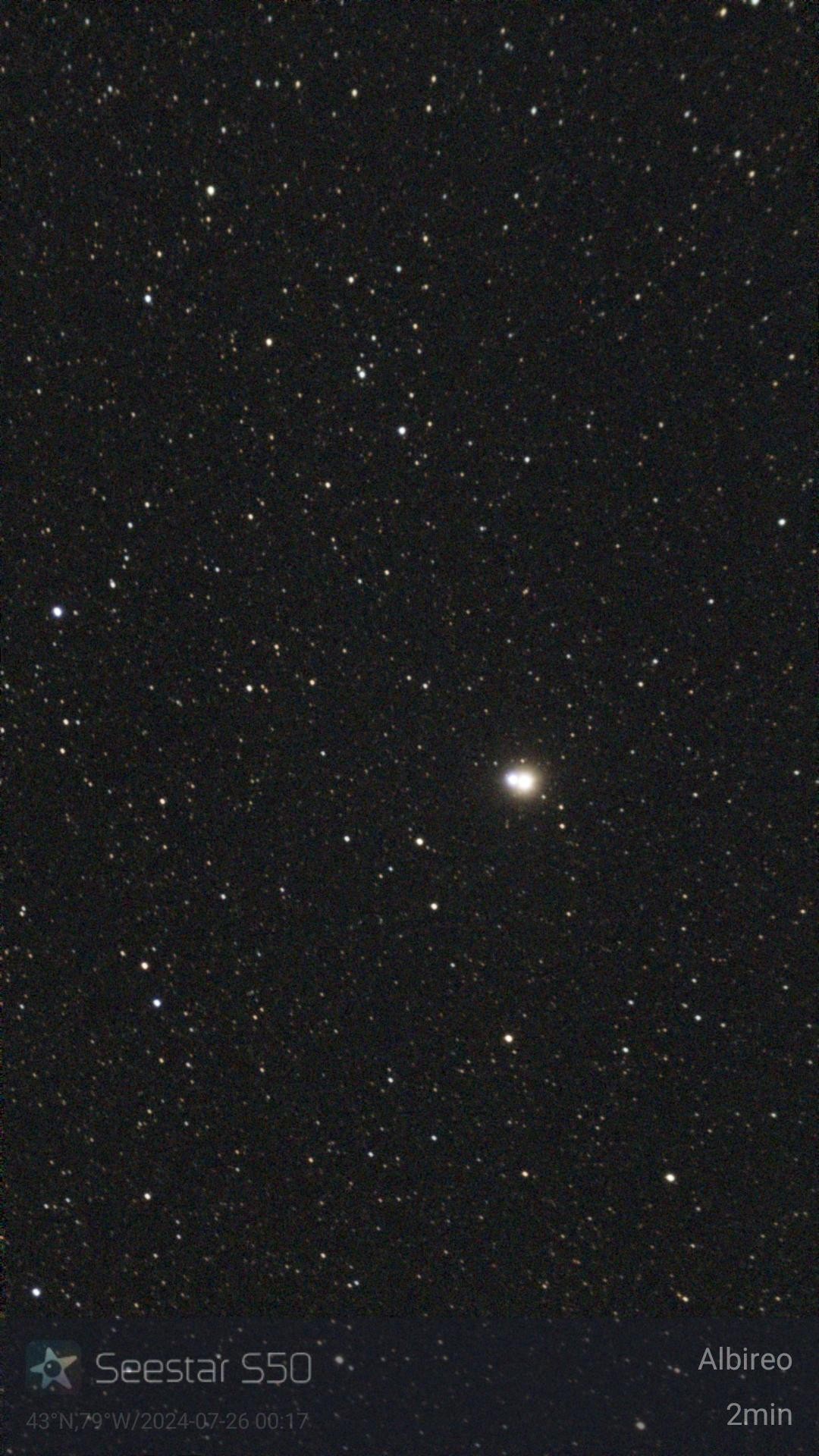
- 61 Cygni - this is a true binary, two K class orange stars in our neighborhood, just 11.4 light years away. They are both variable, with complicated cycles, so watching them long term could be interesting:
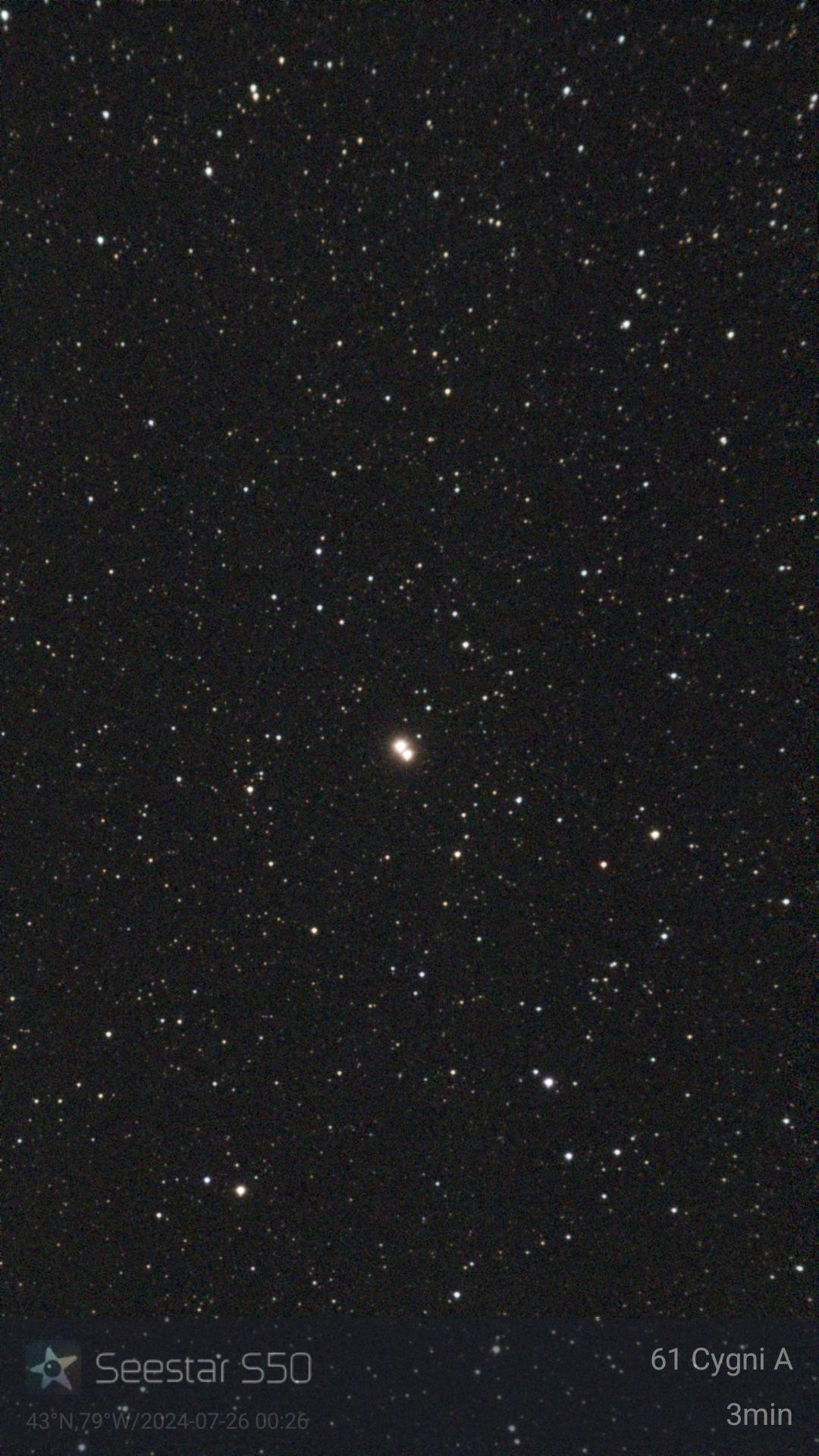
- Probably the most famous one of this threesome is SS Cygni, a dwarf nova variable star, a very tight pair of red and withe dwarfs, in the style of T Cor Bor, but more sedate and with a period of about 60 days instead of 70 years or so. It is normally magnitude 12.4, still very easy to see with the S50, but every 60 days or so it flares up to magnitude 7.7 for a day or two. Keep in mind that a difference of 5 on the star magnitude scale is a 100x increase in luminosity. This is hard to follow with a single telescope, but perfect for a team of S50s distributed around the northern hemisphere, and taking images every hour or so, especially during the week when it flares up. It is hard to find with the SeeStar SkyAtlas, but here it is:
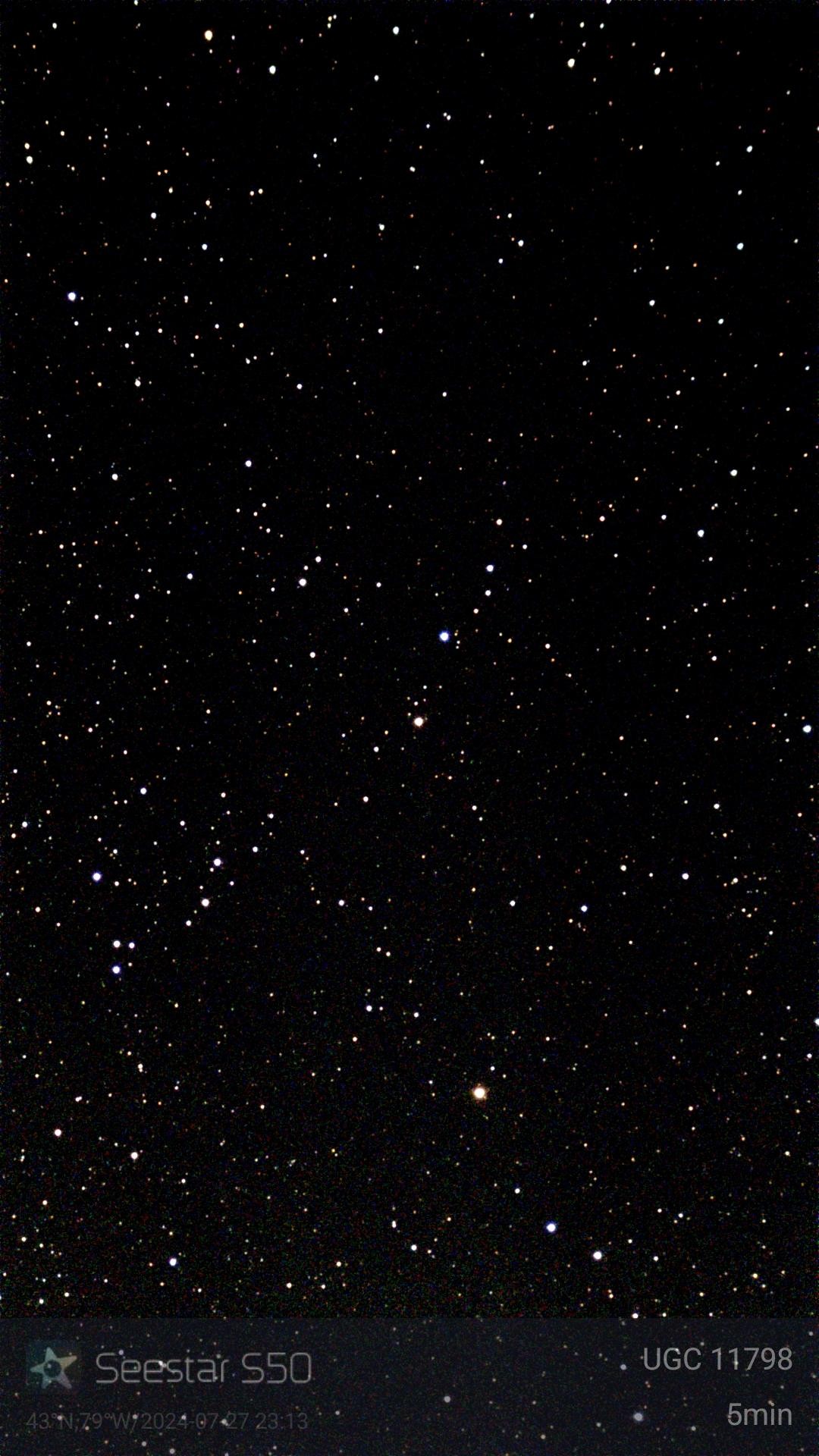
This is how the intensity of the star changes over a period:
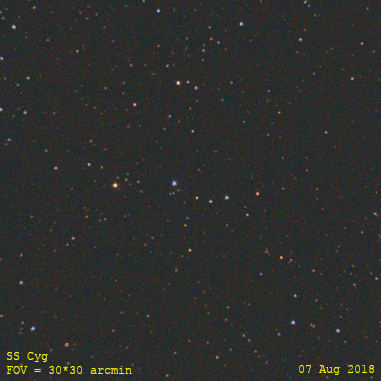
and this is the light curve:
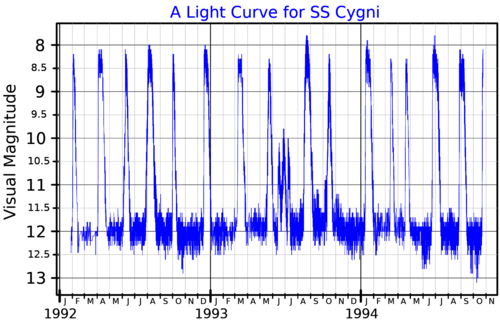
(credit to Wikipedia)